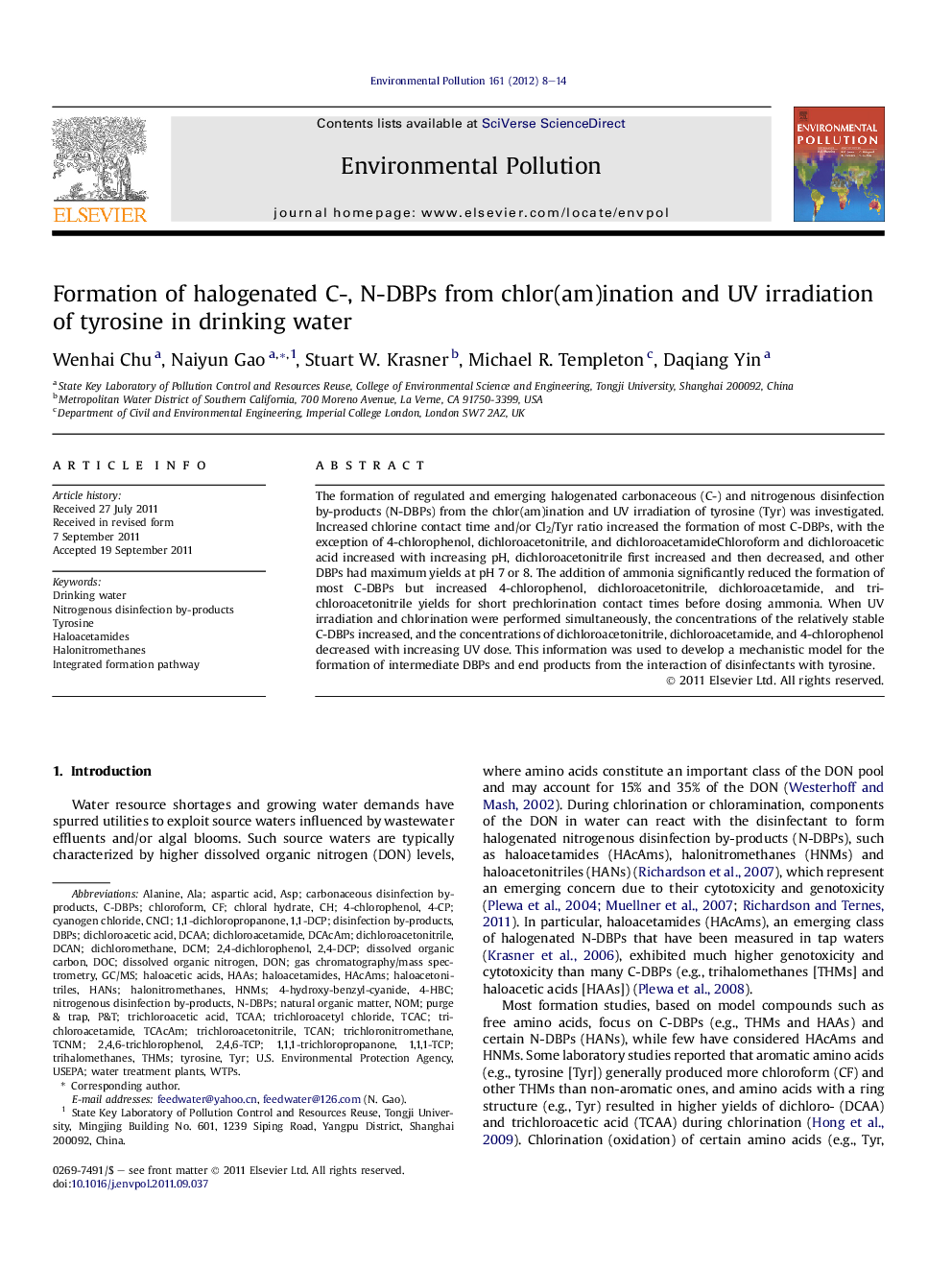| Article ID | Journal | Published Year | Pages | File Type |
|---|---|---|---|---|
| 4425096 | Environmental Pollution | 2012 | 7 Pages |
The formation of regulated and emerging halogenated carbonaceous (C-) and nitrogenous disinfection by-products (N-DBPs) from the chlor(am)ination and UV irradiation of tyrosine (Tyr) was investigated. Increased chlorine contact time and/or Cl2/Tyr ratio increased the formation of most C-DBPs, with the exception of 4-chlorophenol, dichloroacetonitrile, and dichloroacetamideChloroform and dichloroacetic acid increased with increasing pH, dichloroacetonitrile first increased and then decreased, and other DBPs had maximum yields at pH 7 or 8. The addition of ammonia significantly reduced the formation of most C-DBPs but increased 4-chlorophenol, dichloroacetonitrile, dichloroacetamide, and trichloroacetonitrile yields for short prechlorination contact times before dosing ammonia. When UV irradiation and chlorination were performed simultaneously, the concentrations of the relatively stable C-DBPs increased, and the concentrations of dichloroacetonitrile, dichloroacetamide, and 4-chlorophenol decreased with increasing UV dose. This information was used to develop a mechanistic model for the formation of intermediate DBPs and end products from the interaction of disinfectants with tyrosine.
Graphical abstractFigure optionsDownload full-size imageDownload as PowerPoint slideHighlights► Increased contact time and/or Cl2/Tyr decreased the formation of some N-DBPs. ► Changing the pH of disinfection decreases the formation of some N-DBPs. ► N-DBP yields increased for short prechlorination contact time before dosing ammonia. ► Low pressure UV before chlorination did not impact the formation of DBPs from Tyr. ► A novel integrated formation pathway of halogenated C-, N-DBPs is proposed.
